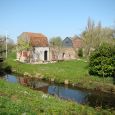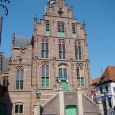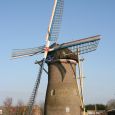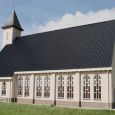Culemborg
Advertisement
By train
Culemborg is on the railway line Utrecht-Geldermalsen-Tiel / Eindhoven. Per hour during the day four trains stop in both directions. The travel time is 19 minutes Culemborg-Utrecht. In Culemborg station is a parking and storage capacity for bicycles, much of which is covered and guarded.
By road
Culemborg is on the highway Utrecht-'s Hertogenbosch ( A2 ) and the provincial road Culemborg - Kesteren ( N320 ).
By bus
Accessible by bus from Arriva:
Line 46, Tiel, Nieuwegein (from Culemborg)
Line 41, Eck en Wiel-Culemborg
Line 50, Rumpt-Culemborg
Line 275 Maarssen, Culemborg
City Hall of Culemborg
The town hall of the town of Culemborg Culemborg . The building is a late-Gothic structure of rectangular plan, built between 1534 and 1539 to a design by Rombout Keldermans . It was built by Elisabeth of Culemborg and her husband Anthony I Lalaing . The building was renovated between 1939 and 1949. During this renovation, stained glass windows, showing the history of Culemborg depicted posted. At the west side of City Hall was at risk. The basement of City Hall has served as a time meat market, a meat hook in the Raadskelder reminds us still.The building has the status of national monument
Filadelfiagemeente
The Filadelfiagemeente Filadelfiakerk or a church free church in Culemborg . The municipality is close in terms of ideas against the experiential Reformed churches.In 1933 founded Jacobus den Hartog with a single family community in the Lord's power, under his leadership adorable, blessed in his command. A church is built on the Rietveldseweg in Culemborg. The municipality believes that the Spirit of God departed from the churches in the Netherlands since ds Th. van der Groe in the Lord's name on 19 February 1777 in response to Isaiah 6:9 and 10 "curse sentence" pronounced the Netherlands.But there is a remnant, so we believe, because God's word in Isaiah 6:13 a remnant of hope where Van der Groe pointed.
Castle Culemborg
Culemborg The Castle is the ruins of the former castle located north of Culemborg , in the province of Gelderland . The site where the castle stood is now a public park cultural history.In the 14th century built John II a castle on the outskirts of town with a pentagonal ground plan. The building consisted of one large room , a fortress for with courtyard , outbuildings and a round keep. In 1360 there was a square tower built. The round donjon was in 1371 completed, and had walls approximately 4.40 meters thick. Immediately after completing this dungeon has begun construction of a second keep. The extensions were made by the architect Jan van den Doom also at the Cathedral of Utrecht had worked.
The Foundation has Kasteeltuin Culemborg archaeological studies on the location of the foundations and the site converted into a public historical cultural park. From the air it is still recognizable castle grounds, a large part of the castle moat is still there, and in the field are still some wall remains visible.
Johanna
The mill Johanna was a sailor ground flour mill in Culemborg and was built in 1888.In 1878 this mill at the site of a wooden windmill built in 1888 but burned down completely. Immediately after the mill is replaced by the present stone mill. Over time he has had restorations in 1943, 1954, 1975 / 6 and 1991.The mill was gradually built into the expansion of Culemborg, where the mill is known as "the windmill of Schennink".
Fort Everdingen
Fort Everdingen is part of the New Dutch Waterline and named after the nearby village of Everdingen .The fort, together with the Fort Honswijk Leak access . The tower fortress was built between 1842 and 1847 on the spot where the Lekdijk and Diefdijk meet. Later, there are several extensions have been made, including a counterscarp gallery , a house and several fortwachter bombproof buildings. In the fort are three locks to find the flooding of the polder between Diefdijk and Culemborg. The most notable is the bear louse on the east side of the fort, together with the lock range of Work to the rinse was used for the flooding of the polder between Diefdijk and Culemborg
Information not available





